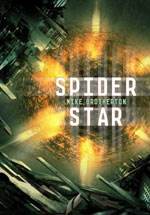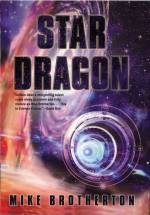Search
More Online Astronomy Resources for Writers
July 19th, 2010
A few years ago I compiled a list of online astronomy resources for writers following that year’s Launch Pad Astronomy Workshop for Writers. Every year there are new links we pass around and discuss, so I wanted to do an addendum, if you will, adding more links to the ones I’ve previously posted (and which I feel are still excellent resources).
Last year I posted a summary that included youtube videos of many of the Launch Pad talks.
Here are some of the additional blog posts of my own (many I used with my astronomy class this past spring) that I referred to at the workshop…or should have:
Online Resources for Exoplanets. Links to summary pages and videos.
Small Bodies in the Solar System. More videos, some commentary.
Journeys through the Universe videos (including Contact opening, falling into a black hole, etc.). Some really good ones here.
The Planets and Moons of the Solar System videos. Really good ones, I think.
I spent too much time mining youtube this year so far…but I did find some good stuff. Hope I save some people some time by pointing at some good things above.
Eric Sandquist’s page of astronomy animations. We used this to look at black body radiation, but it’s got some good stuff for a lot of topics.
Guide to Space (a bunch of topics from Universe Today — looks good!)
Carnival of Space. A traveling set of links related to astronomy, weekly.
Galaxy Zoo. Classify extragalactic objects!
Stellarium.org — an online planetarium program.
A pretty gory Mythbuster’s video suggestive of what would happen if you fell into a stellar mass black hole and the tidal forces got you.
Some resources that professional astronomers use, many of which you can use, too!
NASA’s Extragalactic Database (NED) — compilation of information about extragalactic objects, plus some other handy tools and review article library (Level 5).
NASA’s Astrophysical Data Service — compilation of astronomy resources, primarily abstracts and complete journal articles.
National Virtual Observatory — check out the sky the way professional astronomers do.
IRAF — software astronomers use to reduce and analyze data.
Multimission Archive at Space Telescope or MAST — download space-based astronomical data from a variety of telescopes, including Hubble.
DS9 — a viewer for those FITS files you download from MAST. Yes, Star Trek inspired name.
Oh, and finally let me put some links here to blogs and public photos from Launch Pad 2010, so I can find them as easily as you:
Cecilia Tan’s photo gallery. She also did some blogging. She also wrote some interesting lists for Io9, like 5 most interesting astronomical discoveries in the last 20 years (in planetary astronomy) and 5 Science Facts Science Fiction Always Gets Wrong.
Alice Henderson’s Launch Pad photo gallery.
Jeremy Tolbert’s official group photo.
Kevin Grazier writes about Launch Pad at Discover.
Rachel Swirsky’s liveblogging of Launch Pad. I was impressed….
You can follow any responses to this entry through the RSS 2.0 feed. You can leave a response, or trackback from your own site.


Outstanding! I’ve already showed a bunch of the YouTube videos to people.
What do you think of Celestia, Mike?
http://www.shatters.net/celestia/
[…] More Online Astronomy Resources for Writers […]
Celestia looks good and I’ve had it recommended to me, but I haven’t really played around with it much. Maybe I will soon as I’m teaching intro astronomy again this fall and looking to innovate the way I teach the course.
Mike – I’ve been browsing through some of your recommendations in particular regards to extrasolar planets and find much of it, unfortunately, sailing right over my pointy little head. I did stumble across some links to books, however, that might serve my purpose, which is essentially trying to get a grasp on the nature of extrasolar planets for a new book. One in particular is ‘Infinite Worlds’ by Ray Villard, and I wondered if you’d read or seen it? And if you think it might be any good or have other recommendations in that direction?